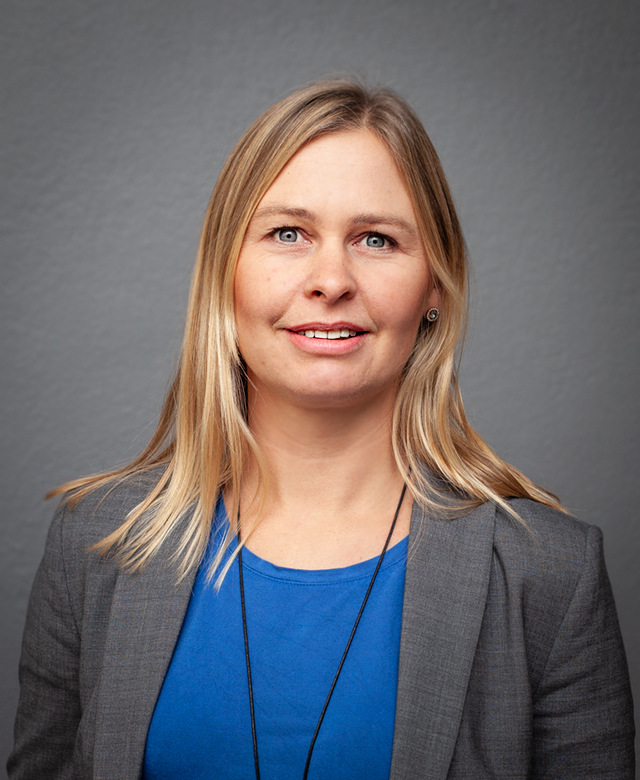Stronghouse
The challenge:
Many of the houses in Europe were built in a way and during a time when efficient energy conservation was not considered important. Now, on the contrary, there is broad consensus on the importance of not wasting energy and using the energy we have as smartly as possible. Stronghouse is funded by the Interreg program in the North Sea region and was established in 2014 to promote sustainable homes, buildings, and communities from an energy perspective. The project has partners from the Netherlands, Germany, Denmark, Belgium, and Sweden who together develop various solutions. The goal is to initiate and implement projects at both local and international levels through a holistic approach.
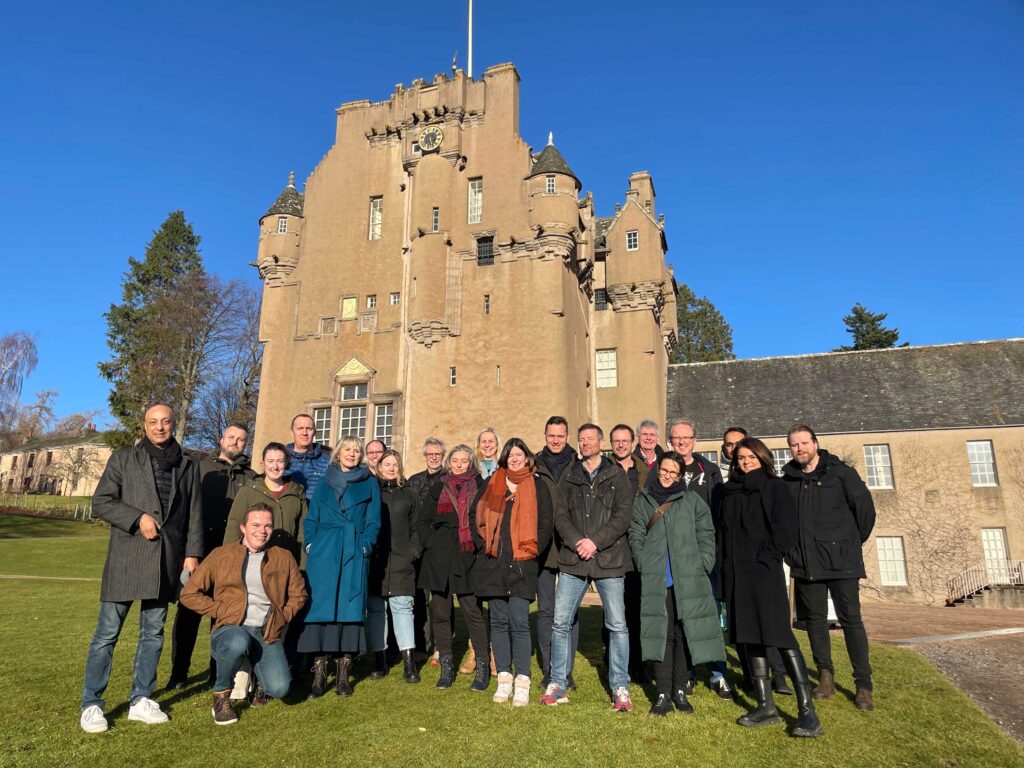
Stronghouse's efforts focus on inspiring and encouraging homeowners and communities to embrace sustainable practices and guiding them through the entire process - from raising awareness about sustainability and available alternatives to planning renovations and finding financing opportunities. We know that our collective efforts can create significant positive changes in the society we live in.
Spring's role in the project:
Spring's task in Stronghouse is to simplify the collection and reporting of green data while increasing access to financing for sustainable home renovations for homeowners. There are many public programs, and some banks offer "green loans," but this can be significantly improved. One of the biggest challenges is how to conduct the reporting of "green data" so that financiers can be sure that their loans are genuinely being used for a green renovation. By making it easy to guarantee that a loan is used for a green initiative and at the same time capturing the "green return" of the green initiative, banks can easily package many smaller loans into, for example, a green bond through our technology. Our technology takes care of the sustainability reporting for the green bond. By making it easy to handle the green reporting, we hope that many banks will want to use our technology and, thus, offer affordable green loans (which the bank finances through green bonds).
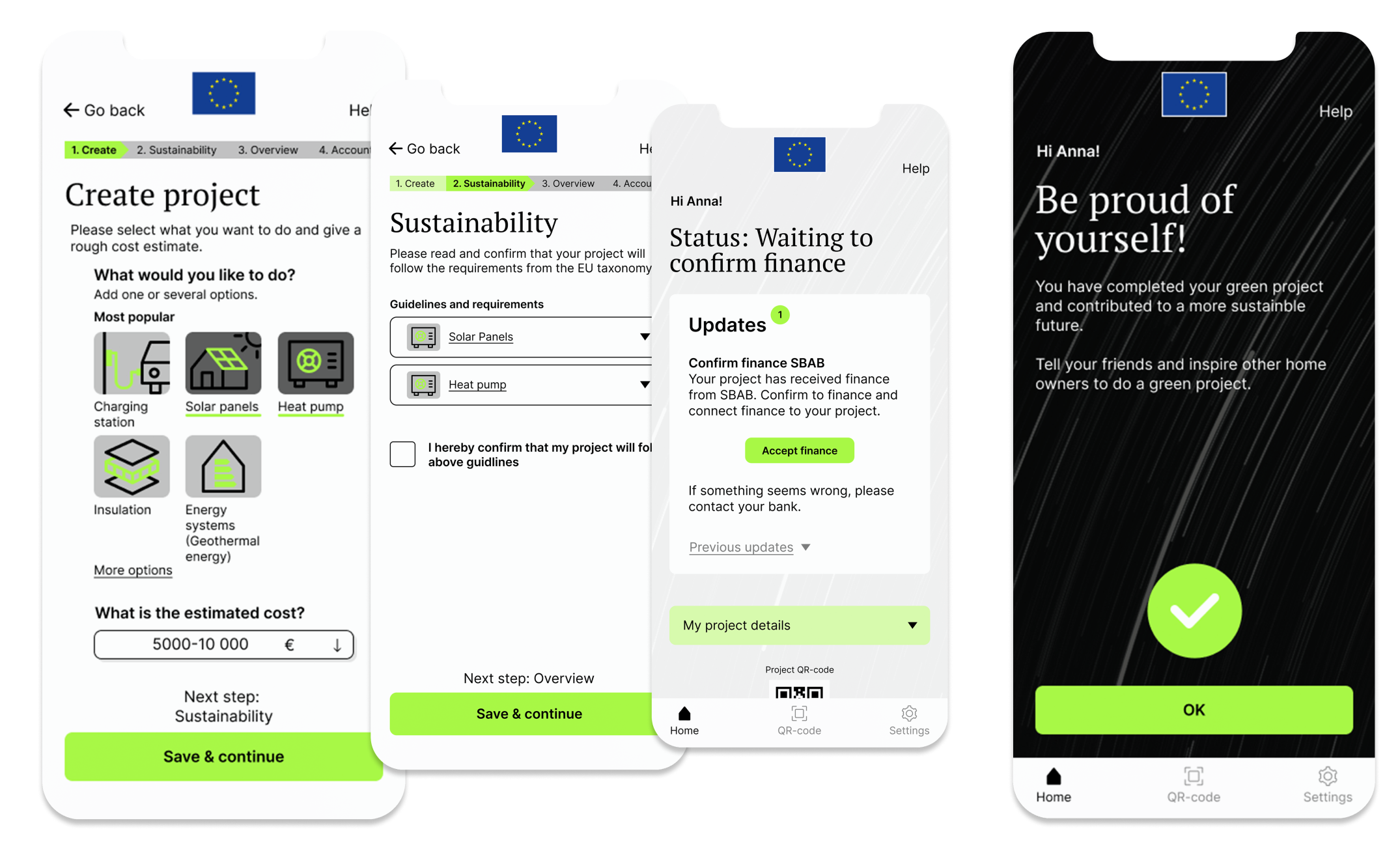
Spring strives to facilitate the collection and reporting of green data for businesses and organizations by developing innovative tools and methods. The core of the project is the use of blockchain technology, which is intended to enhance transparency and efficiency in managing green data. The goal is to ensure that this data is accurate and reliable while making the process smoother and more effective. By utilizing this technology, data regarding energy consumption and carbon emissions, for example, can be managed in a more secure manner.
The process:
We have been working in an agile manner conducting interviews with numerous homeowners, municipalities, regions, and banks to gain a comprehensive understanding of the challenges in the process. Subsequently, we have created personas, or customer profiles, and iterated prototypes based on them to capture differences in requirements from various customer types.
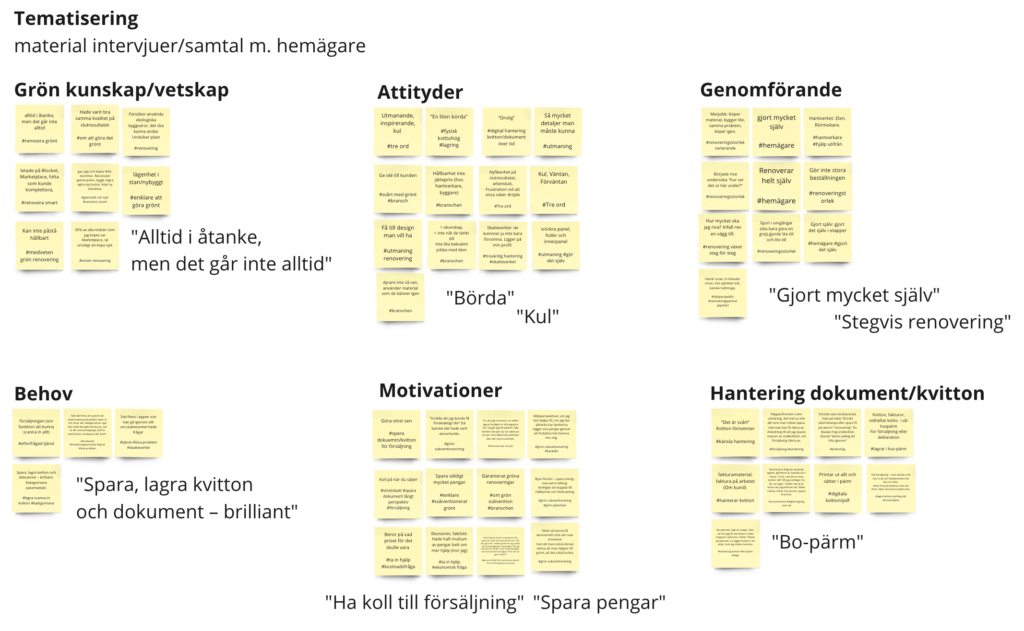
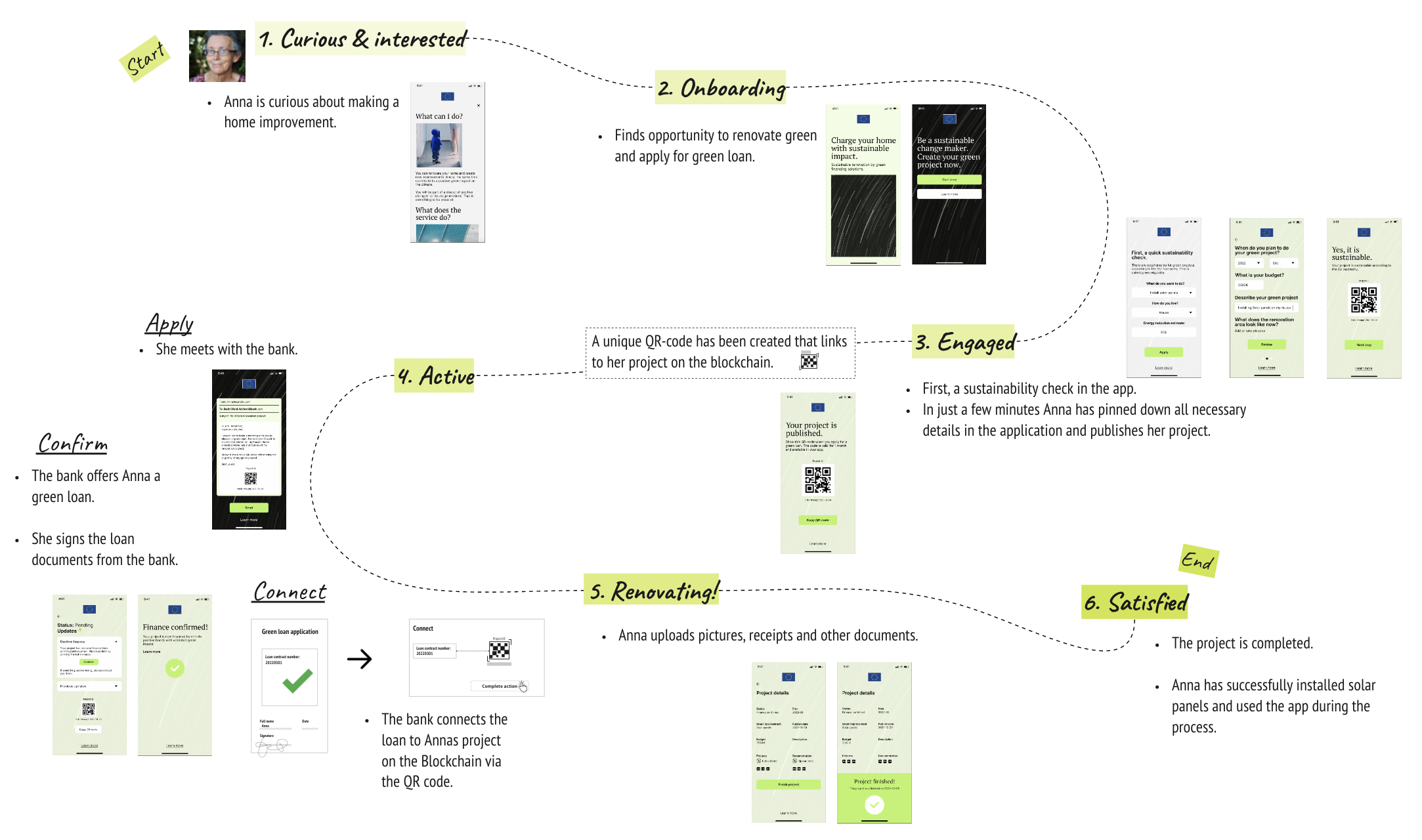
We have invested significant efforts in refining the content and UX writing within the customer app, to facilitate the usage and enhance navigational ease. Additionally, we are dedicated to employing a language that seamlessly combines simplicity and clarity with an engaging and motivational impact on the user.

To facilitate financial institutions, the Spring team has also developed a dedicated portion of the solution to them. By consolidating all loan applications in one place and offering a streamlined solution for the financial institutions to generate necessary "green reports" (impact reports), it becomes feasible to package numerous small loans into green bonds that are traded in the market. This enables financial institutions to effortlessly ascertain the green renovation projects undertaken with their funds, thereby enhancing transparency and reliability within the process.

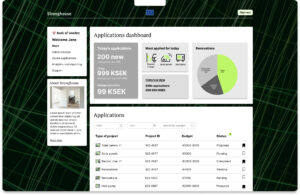
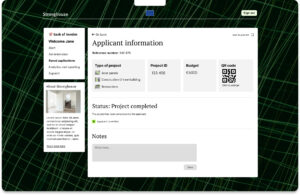

Challenges regarding Blockchain technology and EBSI
To simplify the process of collecting and reporting green data, Spring is developing a system based on blockchain technology and EBSI (European Blockchain Services Infrastructure). One of the foremost challenges associated with the adoption of blockchain technology and EBSI is that it is still a relatively nascent technology that has yet to be widely implemented. This implies the presence of certain technical challenges and obstacles that need to be overcome before the technology can be fully deployed. Another challenge pertains to potential legal and regulatory barriers that must be surmounted to ensure the secure and reliable utilization of the technology.
Are you curious to learn more, please continue reading
If you are interested in gaining further insights into the Stronghouse project and how blockchain technology can be utilized to enhance transparency and efficiency in green data management, you can visit the project's website here. There, you will find additional information about the project, its overarching purpose and objectives, as well as the various organizations involved in its execution. You will also discover details about the different technologies employed within the project, including blockchain and EBSI, and how these technologies can be employed to address specific challenges and issues associated with green data management.
Additionally, if you would like to obtain further information about Stronghouse, feel free to reach out to us at Spring. You can contact Andreas at andreas.nilsson@spring.se, and we can continue the conversation.
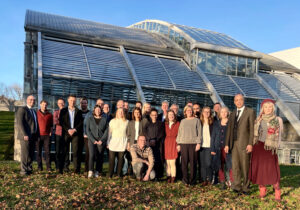
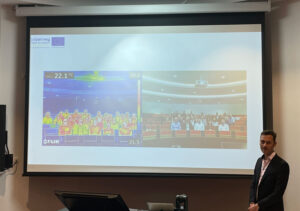
Competences and methods in this project:
- Front-end/
- Back-end/
- UX design/
- Visual design/
Want to discuss
a project?
